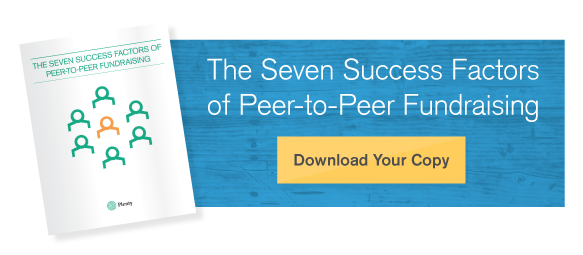You Fulfilled Your Mission, Now What?
I started fighting for LGBTQ equality long before I came out to myself, my friends, or my family. The first campaign I worked on was the fight to repeal "Don’t Ask, Don’t Tell" in the US military, to which I devoted the entirety of my last high school summer vacation to. And if you ask many who’ve been working in this space for more than the last few years, they’ll likely agree that at that time, national marriage equality felt light years away.
So, when I look back on 2015, I appreciate that both myself, and this nation, have come a long way since Don’t Ask, Don’t Tell, a testament proven with the passing of the marriage equality act, which secured marriage rights for same sex couples on June 26 by a sweeping ruling from the United States Supreme Court. The ruling was undoubtedly historic and momentous, yet surprisingly – it left many of us in the LGBTQ community feeling conflicted.
But before we break down what resulted from the passing of the act, let’s first ask: what did it take to propel the movement to June 26, 2015?
In 2010, a Massachusetts District Court ruled that the denial of marriage rights to same sex couples is unconstitutional. While the fight for marriage equality had been underway for years, this first ruling made the fight worthwhile and the goal attainable. Following that victory, thousands of nonprofit organizations, advocacy groups, community factions, and movement leaders working on the greater LGBTQ rights movement rallied in earnest around one goal: legally recognized marriage rights for all same sex couples.
To garner large-scale support for that goal, the movement did two things well: first, it created a message – the marriage equality message – that was relatable, compelling, and simple. Marriage, and by extension love, is an institution that the majority of Americans understand, relate to, and value. For that reason, the message of marriage equality resonated with group larger than just the LGBTQ population itself.
And to reach that larger group, organizations leveraged the dynamics of the networked world to mobilize around this social issue. The movement met users and public figures where they already were – on social media – and then created low barrier to entry campaigns to rally millions. One such campaign, the rainbow Facebook filter option for profile pictures, reached 26 million participants. The sheer volume of that campaign alone represented a significant statement of public opinion and validated the court’s ruling.
Despite the momentum generated by the change in public opinion, individual states’ victories on the matter, and the highest court’s validation, today, many of us in the movement are learning firsthand the downfalls of our one, concise message because now, many Americans believe that the fight for LGBTQ equality has been won, and that there’s nothing more to do.
But the truth is – there is so much more to do. The thousands of nonprofit organizations, advocacy groups, community factions, and movement leaders are learning to navigate a new “post-marriage movement” where top issues include housing and workplace discrimination, LGBTQ youth homelessness, and violence against transgender people of color. Many of these critical issues aren’t on the radar of public consciousness, much less being actively discussed outside of the LGBTQ organizations that are tackling these issues.
So, what’s the lesson here?
It’s important to recognize the huge success that culminated on June 26, and it’s important to understand that a large part of that success was our networked, peer-to-peer world, and the concise messaging of the movement. Simultaneously, we must also consider the disadvantages that come along with that concise messaging, and learn from them.
When pursuing a specific goal, as a means to fulfilling your mission, be cognizant of the way you communicate with your supporters, advocates, and constituents. Recognize what information, issues, and voices are being left out of the conversation, and work to incorporate them into the dialogue, especially with your most dedicated supporters. In the long run, this effort will set your organization up for a seamless transition when pivoting to other mission-fulfilling goals.
At the end of this year, my conflicted emotions and thoughts regarding the ruling still stand: we’ve come so far, but we’ve not won complete equality for LGBTQ people just yet. Especially at the end of the year, it’s important to take a moment to celebrate our victories and congratulate ourselves for our hard work, but equally important to forge the path ahead to actualize remaining aspects of our missions.
What would the world look like if your organization fulfilled its mission? Do you have a strategy in place to make this a reality? Download our Seven Success Factors e-book and focus on the seven areas responsible for fundraising success.
Share this
You May Also Like
These Related Stories

What Construction Can Teach You About Measuring Impact




No Comments Yet
Let us know what you think